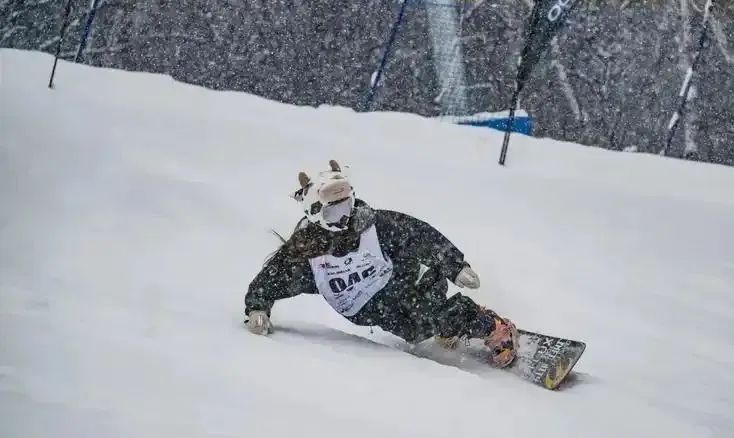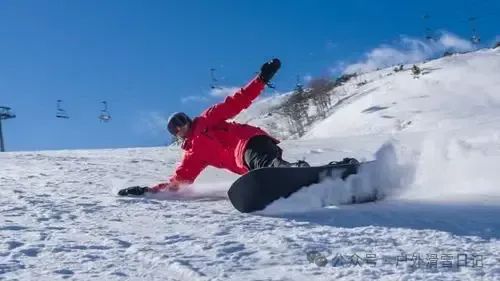In the realm of snowboarding, every rider’s journey is a path from tentative exploration to confident mastery. For beginners, stepping onto the beginner slopes alongside friends, transitioning from pushing on the flat to practicing on the backslope, and after countless edge catches and falls, finally gathering the courage to attempt the transition from heel edge to toe edge is a crucial step in technical advancement. However, when trying to mimic the fluid edge techniques of experts, one often finds their own movements stiff and disconnected, leading to confusion: how can experts glide so smoothly across the snow while one feels so clumsy? What is the root of the problem?

Center of Gravity Control: The Essence of Edge Transition
In snowboarding, controlling the center of gravity is the core element of edge transition techniques. Many beginners struggle with the heel-to-toe transition due to failing to shift their center of gravity forward in time, resulting in a stuttering motion. The correct approach is to actively shift the center of gravity to the front foot or slightly forward between both legs just before the transition, which helps the snowboard naturally transition from the toe edge to the heel edge, reducing resistance during the switch. Through repeated practice, gradually developing sensitivity to center of gravity control is key to enhancing the smoothness of edge transitions.
Eye Guidance: The Precursor to Movement
Vision plays a crucial role in snowboarding. It not only helps riders observe their surroundings but also serves as an important signal for guiding body movements. During the edge transition, if the gaze is too focused on the feet, it restricts the body’s natural flow. The correct eye guidance should direct the gaze toward the desired direction of movement, helping the body adjust its posture in advance to prepare for the transition. By guiding the eyes, a more coordinated movement trajectory between the body and snowboard can be achieved.
Overcoming Fear, Building Confidence
Fear is a common psychological barrier in the learning process of snowboarding. Fears of speed, falling, or losing control often make riders appear tense and hesitant during edge transitions. To overcome this fear, it is necessary to gradually adapt through progressively increasing the difficulty and speed of practice. Each successful transition enhances one’s confidence. Through continuous attempts and practice, a sense of confidence and control in snowboarding can be gradually built.

Technical Details: Fine-tuning
The heel-to-toe transition may seem simple, but it encompasses many intricate technical movements. From subtle body rotations to leg power distribution, and to ankle flexibility control, every detail affects the smoothness of the transition. To improve edge transition techniques, it is essential to break down the movements into several parts for individual practice. By repeatedly refining and practicing each detail, one can gradually master the correct technical movements and establish a smooth rhythm for transitions.
Snowboard and Body: Working in Harmony
Choosing the right snowboard is equally important for improving the quality of edge transitions. The stiffness of the snowboard, the sharpness of the edges, and the choice of board shape all directly affect the effectiveness of the transitions. Additionally, the rider’s physical condition is also a crucial factor. Flexibility, power distribution, and balance ability can all influence the snowboard’s responsiveness and the smoothness of the transitions. Therefore, regularly engaging in physical training, stretching, and balance practice to maintain optimal physical condition is an important part of enhancing edge transition skills.
Mental Adjustment: Perseverance
Lastly, but importantly, maintaining a positive mindset and perseverance is essential. Snowboarding is a sport that requires long-term investment and continuous practice. Throughout the learning process, one is bound to encounter setbacks and difficulties. However, it is these challenges that drive us to grow and improve continuously. Keeping a positive mindset and enjoying the joy and sense of achievement brought by each attempt is an indispensable part of the snowboarding journey.
In summary, the smoothness of the heel-to-toe transition depends not only on the mastery of technical skills but also on various factors such as mindset, physical condition, equipment choice, and practice methods. Through continuous practice, meticulous technical refinement, appropriate equipment selection, and positive mental adjustments, every snowboarding enthusiast can continuously break through themselves on this icy path, achieving a more fluid and effortless snowboarding experience. Snowboarding is not only a learning process of a skill but also a journey of self-challenge and growth.